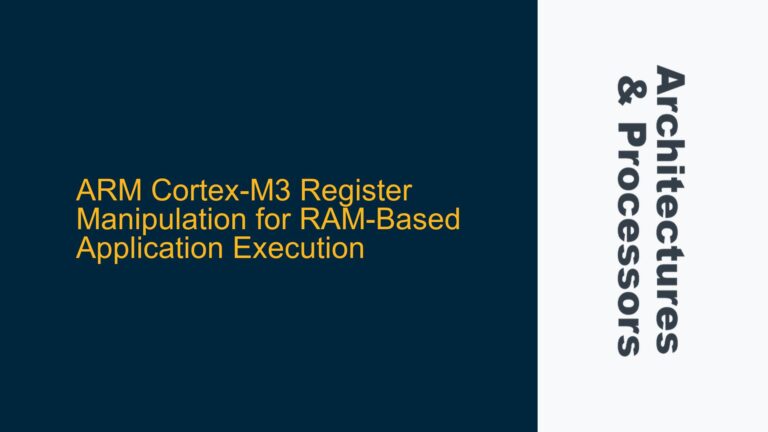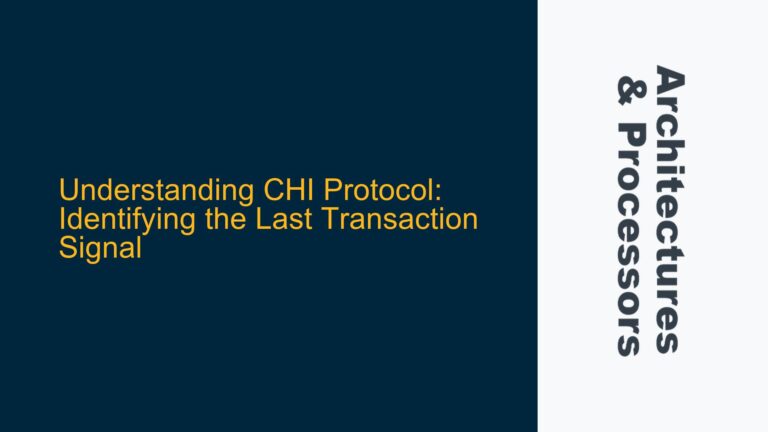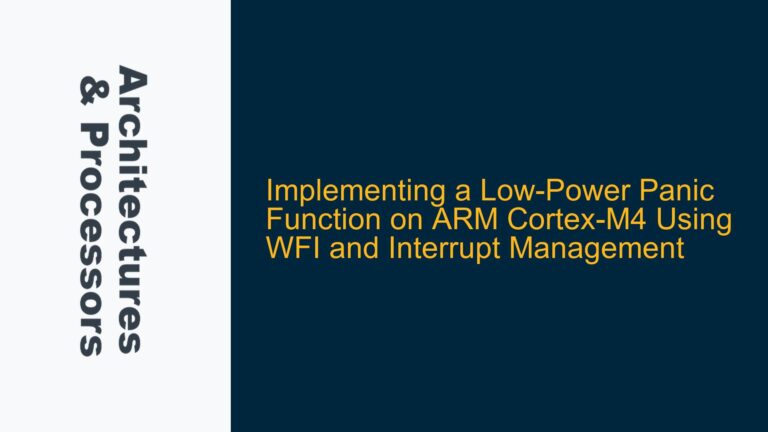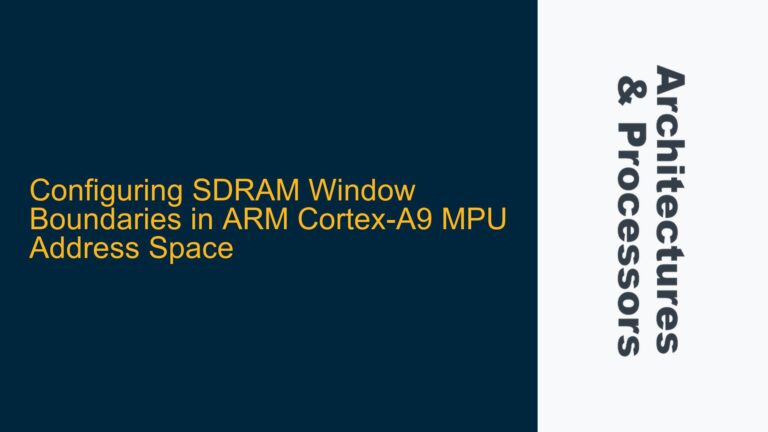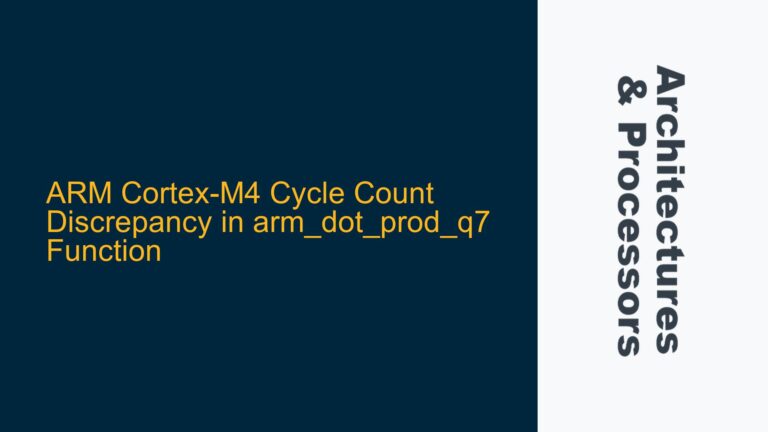TrustZone Monitor Mode Entry Mechanisms and Security Implications
The ARM TrustZone technology provides a robust security framework by partitioning the system into Secure and Normal worlds. The Secure world is designed to handle sensitive operations, while the Normal world operates in a less privileged environment. The transition between these worlds is tightly controlled through the Monitor mode, which acts as a gatekeeper. The ARM documentation specifies that the processor can enter Monitor mode from the Normal world via specific mechanisms: the Secure Monitor Call (SMC) instruction or a subset of hardware exceptions such as IRQ, FIQ, external Data Abort, and external Prefetch Abort. These mechanisms are treated as exceptions to the Monitor mode software, ensuring that any transition is carefully managed.
However, the security of this transition is contingent on the integrity of the Normal world. If an attacker gains root privileges in the Normal world, they can potentially exploit these mechanisms to force an entry into Monitor mode. This raises a critical question: What prevents an attacker with root privileges from accessing the Secure world? The answer lies in the design of the TrustZone architecture and the role of the Secure Monitor.
The Secure Monitor is not merely protected by privilege levels; it is also safeguarded by the architectural design of TrustZone. When an SMC instruction is executed or a hardware exception occurs, the processor transitions to Monitor mode, where the Secure Monitor software takes control. This software is responsible for validating the context of the transition and ensuring that any attempt to access the Secure world is legitimate. The Secure Monitor can enforce policies that dictate whether a particular transition is allowed, based on the source and nature of the request.
Despite these safeguards, the possibility of an attacker exploiting these mechanisms cannot be entirely ruled out. If an attacker can craft a valid SMC call or trigger a hardware exception, they can force the processor into Monitor mode. Once in Monitor mode, the Secure Monitor must determine whether the transition is legitimate or malicious. This is where the security of the system is truly tested. The Secure Monitor must be designed to handle such scenarios, ensuring that even if an attacker gains root privileges in the Normal world, they cannot compromise the Secure world.
Root Privilege Exploitation and TrustZone Defense Mechanisms
The primary concern in this scenario is the potential for an attacker with root privileges in the Normal world to exploit the TrustZone transition mechanisms. Root privileges grant the attacker significant control over the Normal world, including the ability to execute privileged instructions and manipulate hardware resources. This level of access enables the attacker to trigger SMC instructions or hardware exceptions, thereby forcing the processor into Monitor mode.
However, the TrustZone architecture includes several defense mechanisms to mitigate such attacks. First, the Secure Monitor software is designed to validate the context of any transition from the Normal world. This validation process includes checking the source of the SMC call or exception, as well as the state of the processor at the time of the transition. If the Secure Monitor detects any anomalies, it can reject the transition and take appropriate action, such as logging the event or triggering a secure reset.
Second, the TrustZone architecture includes hardware-based protections that prevent unauthorized access to the Secure world. For example, the Non-Secure state of the processor is explicitly separated from the Secure state, ensuring that resources in the Secure world cannot be accessed directly from the Normal world. This separation is enforced at the hardware level, making it difficult for an attacker to bypass these protections even with root privileges.
Third, the Secure Monitor can implement additional security measures, such as runtime integrity checks and secure boot processes, to ensure that the system remains in a trusted state. These measures can detect and respond to attempts to compromise the Secure world, further reducing the risk of a successful attack.
Despite these defenses, the possibility of a sophisticated attacker exploiting these mechanisms remains. For example, if an attacker can gather enough information about the system to craft a valid SMC call, they may be able to bypass some of the Secure Monitor’s validation checks. In such cases, the Secure Monitor must rely on additional layers of security, such as cryptographic authentication and secure storage, to protect sensitive data and operations.
Secure Monitor Response to Malicious Transitions and Attack Mitigation
The Secure Monitor plays a critical role in mitigating attacks from the Normal world. When a transition to Monitor mode occurs, the Secure Monitor must determine whether the transition is legitimate or malicious. This determination is based on a combination of hardware and software mechanisms, including the validation of the transition context, the enforcement of security policies, and the implementation of runtime integrity checks.
One of the key challenges in this process is distinguishing between legitimate transitions and malicious ones. For example, a hardware exception triggered by a programming error in the Normal world may appear similar to an exception triggered by an attacker. The Secure Monitor cannot inherently know the intent behind the transition, but it can enforce policies that limit the potential impact of malicious transitions.
To address this challenge, the Secure Monitor can implement a range of mitigation strategies. First, it can enforce strict access control policies that limit the ability of the Normal world to trigger transitions to Monitor mode. For example, the Secure Monitor can restrict the types of exceptions that can cause a transition, or it can require additional authentication for certain types of SMC calls.
Second, the Secure Monitor can implement runtime integrity checks to detect and respond to malicious behavior. These checks can include verifying the integrity of the Normal world’s software, monitoring for unusual patterns of activity, and enforcing secure boot processes that ensure the system starts in a trusted state.
Third, the Secure Monitor can leverage cryptographic techniques to protect sensitive data and operations. For example, it can use secure storage to protect cryptographic keys and other sensitive information, ensuring that even if an attacker gains access to the Secure world, they cannot easily compromise the system.
Finally, the Secure Monitor can implement logging and auditing mechanisms to track transitions and detect potential attacks. These mechanisms can provide valuable information for forensic analysis and help identify vulnerabilities that need to be addressed.
In conclusion, while the TrustZone architecture provides robust security mechanisms to protect the Secure world from attacks originating in the Normal world, the Secure Monitor plays a critical role in enforcing these protections. By implementing a combination of hardware and software defenses, the Secure Monitor can mitigate the risk of attacks and ensure the integrity of the system. However, the effectiveness of these defenses depends on careful design and implementation, as well as ongoing monitoring and maintenance to address emerging threats.

